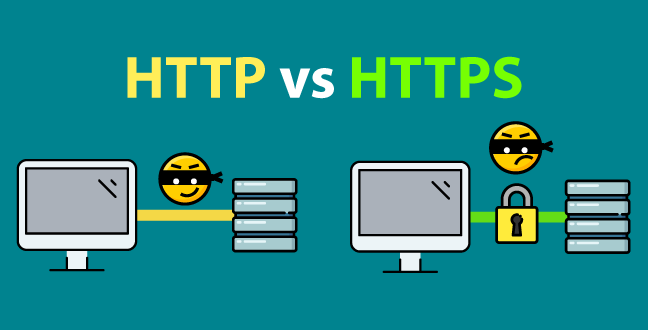In the world of website browsing, you might have come across terms like HTTP and HTTPS, especially when you see the prefix of a web address. These acronyms might seem similar, but they represent different protocols that govern how data is transmitted over the internet. In this blog post, we’ll delve into the dissimilarities between HTTP and HTTPS and why the latter has become increasingly important for website owners and users alike.
HTTP: The Foundation
HTTP stands for Hypertext Transfer Protocol. It’s the protocol used for transferring data over the World Wide Web. When you type a web address into your browser’s address bar and hit enter, your browser sends an HTTP request to the server hosting the website you want to visit. The server then responds with the requested web page, which your browser renders for you to view.
While HTTP is efficient for transmitting data, it lacks one crucial aspect: security. When you transmit data over HTTP, it’s sent in plain text, making it vulnerable to interception by malicious actors. This means that any information you input into a website, such as login credentials or credit card details, could potentially be intercepted and stolen.
HTTPS: The Secure Upgrade
HTTPS, on the other hand, stands for Hypertext Transfer Protocol Secure. It’s essentially the same as HTTP but with an added layer of security provided by SSL/TLS encryption. When you visit a website using HTTPS, your browser establishes a secure connection with the server using SSL/TLS encryption before any data is transmitted.
This encryption ensures that the data exchanged between your browser and the server is encrypted and cannot be easily intercepted by third parties. As a result, HTTPS provides a higher level of security and privacy for users, making it the preferred protocol for transmitting sensitive information over the internet.
Why HTTPS Matters
The shift from HTTP to HTTPS has become increasingly important for several reasons:
#1 Security:
As mentioned earlier, HTTPS provides encryption to protect sensitive data from interception and tampering by malicious actors. This is especially crucial for websites that handle sensitive information such as personal details, payment information, and login credentials.
#2 Trust and Credibility:
Websites that use HTTPS are perceived as more trustworthy and credible by users. Seeing the padlock icon and “https://” prefix in the address bar instills confidence in visitors that their data is secure and that the website is legitimate.
#3 SEO Benefits:
In 2014, Google announced that HTTPS would be used as a ranking signal in its search algorithm. This means that websites using HTTPS may receive a slight boost in search engine rankings compared to those using HTTP. So HTTPS help for search engine optimization, all other factors being equal.
#4 Compliance Requirements:
Many regulations and standards, such as the General Data Protection Regulation (GDPR) and the Payment Card Industry Data Security Standard (PCI DSS), require websites to use HTTPS when handling sensitive information. Failure to comply with these requirements can result in penalties and fines.
Making the Switch
If you own a website that still uses HTTP, making the switch to HTTPS is highly recommended. Fortunately, it’s easier than ever to obtain an SSL/TLS certificate and enable HTTPS on your website. Many web hosting providers offer free SSL certificates, and there are numerous tutorials and guides available online to help you through the process.
By migrating to HTTPS, you not only enhance the security and privacy of your website but also build trust with your visitors and potentially improve your search engine rankings. It’s a small but significant step towards creating a safer and more secure browsing experience for everyone on the web.

